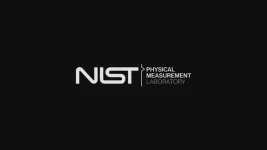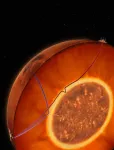(Press-News.org) Researchers have developed a new way of improving diagnosis of bipolar disorder that uses a simple blood test to identify biomarkers associated with the condition.
The researchers, from the University of Cambridge, used a combination of an online psychiatric assessment and a blood test to diagnose patients with bipolar disorder, many of whom had been misdiagnosed with major depressive disorder.
The researchers say the blood test on its own could diagnose up to 30% of patients with bipolar disorder, but that it is even more effective when combined with a digital mental health assessment.
Incorporating biomarker testing could help physicians differentiate between major depressive disorder and bipolar disorder, which have overlapping symptoms but require different pharmacological treatments.
Although the blood test is still a proof of concept, the researchers say it could be an effective complement to existing psychiatric diagnosis and could help researchers understand the biological origins of mental health conditions. The results are reported in the journal JAMA Psychiatry.
Bipolar disorder affects approximately one percent of the population – as many as 80 million people worldwide – but for nearly 40% of patients, it is misdiagnosed as major depressive disorder.
“People with bipolar disorder will experience periods of low mood and periods of very high mood or mania,” said first author Dr Jakub Tomasik, from Cambridge’s Department of Chemical Engineering and Biotechnology. “But patients will often only see a doctor when they’re experiencing low mood, which is why bipolar disorder frequently gets misdiagnosed as major depressive disorder.”
“When someone with bipolar disorder is experiencing a period of low mood, to a physician, it can look very similar to someone with major depressive disorder,” said Professor Sabine Bahn, who led the research. “However, the two conditions need to be treated differently: if someone with bipolar disorder is prescribed antidepressants without the addition of a mood stabiliser, it can trigger a manic episode.”
The most effective way to get an accurate diagnosis of bipolar disorder is a full psychiatric assessment. However, patients often face long waits to get these assessments, and they take time to carry out.
“Psychiatric assessments are highly effective, but the ability to diagnose bipolar disorder with a simple blood test could ensure that patients get the right treatment the first time and alleviate some of the pressures on medical professionals,” said Tomasik.
The researchers used samples and data from the Delta study, conducted in the UK between 2018 and 2020, to identify bipolar disorder in patients who had received a diagnosis of major depressive disorder within the previous five years and had current depressive symptoms. Participants were recruited online through voluntary response sampling.
More than 3000 participants were recruited, and they each completed an online mental health assessment of more than 600 questions. The assessment covered a range of topics that may be relevant to mental health disorders, including past or current depressive episodes, generalised anxiety, symptoms of mania, family history or substance abuse.
Of the participants who completed the online assessment, around 1000 were selected to send in a dried blood sample from a simple finger prick, which the researchers analysed for more than 600 different metabolites using mass spectrometry. After completing the Composite International Diagnostic Interview, a fully structured and validated diagnostic tool to establish mood disorder diagnoses, 241 participants were included in the study.
Analysis of the data showed a significant biomarker signal for bipolar disorder, even after accounting for confounding factors such as medication. The identified biomarkers were correlated primarily with lifetime manic symptoms and were validated in a separate group of patients who received a new clinical diagnosis of major depressive disorder or bipolar disorder during the study’s one-year follow-up period.
The researchers found that the combination of patient-reported information and the biomarker test significantly improved diagnostic outcomes for people with bipolar disorder, especially in those where the diagnosis was not obvious.
“The online assessment was more effective overall, but the biomarker test performs well and is much faster,” said Bahn. “A combination of both approaches would be ideal, as they’re complementary.”
“We found that some patients preferred the biomarker test, because it was an objective result that they could see,” said Tomasik. “Mental illness has a biological basis, and it’s important for patients to know it’s not in their mind. It’s an illness that affects the body like any other.”
“In addition to the diagnostic capabilities of biomarkers, they could also be used to identify potential drug targets for mood disorders, which could lead to better treatments,” said Bahn. “It’s an exciting time to be in this area of research.”
A patent has been filed on the research by Cambridge Enterprise, the University’s commercialisation arm. The research was supported by the Stanley Medical Research Institute and Psyomics, a University spin-out company co-founded by Sabine Bahn.
Sabine Bahn is Professor of Neurotechnology at the Department of Chemical Engineering and Biotechnology and is a Fellow of Lucy Cavendish College, Cambridge.
END
Simple blood test can help diagnose bipolar disorder
2023-10-25
ELSE PRESS RELEASES FROM THIS DATE:
New study identifies illegal hunting as a threat to China’s wildlife and global public health
2023-10-25
Illegal hunting and trading of wildlife in China is becoming a significant threat to biodiversity and public health, according to a new paper by a team of researchers that includes two scholars from the School of Public and International Affairs. It is the first comprehensive assessment of this issue for China.
The paper, "Assessing the illegal hunting of native wildlife in China," appears in Nature today. Its co-authors are Dan Liang, Xingli Giam, Sifan Hu, Liang Ma, and David S. Wilcove. Liang is an associate research scholar at SPIA's Center for Policy Research on Energy and the ...
Age, body mass index, tumor subtype, and racial and ethnic disparities in breast cancer survival
2023-10-25
About The Study: In this study with 9,479 participants, racial and ethnic survival disparities were identified in patients with early-stage breast cancer receiving standardized initial care, and potentially at-risk subgroups, for whom focused interventions may improve outcomes, were found.
Authors: Erica T. Warner, Sc.D., of Massachusetts General Hospital in Boston, is the corresponding author.
To access the embargoed study: Visit our For The Media website at this link https://media.jamanetwork.com/
(doi:10.1001/jamanetworkopen.2023.39584
Editor’s Note: Please see the article for additional ...
Metformin cessation and dementia incidence
2023-10-25
About The Study: Terminating metformin treatment was associated with increased dementia incidence in this study of 12,000 early terminators and 29,000 routine users of metformin. This finding may have important implications for clinical treatment of adults with diabetes and provides additional evidence that metformin is associated with reduced dementia risk.
Authors: Sarah F. Ackley, Ph.D., of Boston University, Boston, is the corresponding author.
To access the embargoed study: Visit our For The Media website at this link https://media.jamanetwork.com/
(doi:10.1001/jamanetworkopen.2023.39723)
Editor’s Note: Please see the article ...
NIST team develops highest-resolution single-photon superconducting camera
2023-10-25
Researchers at the National Institute of Standards and Technology (NIST) and their colleagues have built a superconducting camera containing 400,000 pixels — 400 times more than any other device of its type.
Superconducting cameras allow scientists to capture very weak light signals, whether from distant objects in space or parts of the human brain. Having more pixels could open up many new applications in science and biomedical research.
The NIST camera is made up of grids of ultrathin electrical wires, cooled to near absolute zero, in which current moves with no resistance until a wire is struck by a photon. In these superconducting-nanowire cameras, the energy imparted by ...
Trauma, severe stress in childhood linked to criminal legal involvement in next generation
2023-10-25
A study led by UCLA researchers found that the children of parents who experienced adverse childhood experiences (ACEs)– such as abuse, neglect, violence in the home, or loss of a parent – are at increased risk of arrests and convictions by young adulthood. The authors report that their findings suggest that there is a crucial need for prevention of ACE exposure in the first place, as well as efforts to mitigate the impact of ACEs before they have downstream impacts on the next generation of children who are not yet born. The study appears in JAMA ...
Massive space explosion observed creating elements needed for life
2023-10-25
Scientists have observed the creation of rare chemical elements in the second-brightest gamma-ray burst ever seen – casting new light on how heavy elements are made.
Researchers examined the exceptionally bright gamma-ray burst GRB 230307A, which was caused by a neutron star merger. The explosion was observed using an array of ground and space-based telescopes, including NASA’s James Webb Space Telescope, Fermi Gamma-ray Space Telescope, and Neil Gehrels Swift Observatory.
Publishing their findings today in Nature (25 Oct), ...
InSight seismic data reveals a molten layer at the base of the Martian mantle
2023-10-25
The first data from the InSight mission made it possible to determine the internal structure of Mars in a series of papers from the scientific team published in the summer of 2021. However, since then, the analysis of new data generated by a powerful meteorite impact that occurred on September 18 2021, questioned the first estimates of the internal structure of the Red Planet. By studying the propagation times of waves generated by this impact, an international team led by Henri Samuel, CNRS researcher at the Institut ...
Scientists discover molten layer covering Martian core
2023-10-25
NASA’s InSight mission to Mars helped scientists map out Mars’ internal structure, including the size and composition of its core, and provided general hints about its tumultuous formation.
But findings from a new paper published in the journal Nature could lead to reanalysis of that data. An international team of researchers discovered the presence of a molten silicate layer overlying Mars’ metallic core—providing new insights into how Mars formed, evolved and became the barren planet it is today.
Published on October 25, 2023, the team’s paper details the use of seismic data to locate and identify a thin layer of molten ...
Sediment core analysis supports new epoch characterized by human impact on planet
2023-10-25
Scientists have long debated the Anthropocene Epoch, a proposed unit of geologic time corresponding to the most recent period in history. It’s characterized by substantial human impact on the planet.
Are we living in the Anthropocene? And if we are, then when did it start?
In a research article published this month in The Proceedings of the National Academy of Sciences, The University of Toledo’s Dr. Trisha Spanbauer and Stanford University’s Dr. M. Allison Stegner lend credence to the argument for its existence. The pair analyzed open-source data to track vegetation ...
Romance or nomance? Adolescents prefer to see less sex, more friendships, platonic relationships on screen
2023-10-25
Key takeaways
47.5% of respondents ages 13–24 feel most TV shows and movie plots don’t need sexual content; 51.5% want to see more focus on friendships and platonic relationships.
56% of those aged 10–24 prefer original content over franchises and remakes.
Twice as many adolescents prefer binge releases over weekly drops.
Adolescents want to see lives like their own depicted on screen.
This year’s Teens & Screens report from UCLA’s Center for Scholars & Storytellers, or CSS, found that teens — plus the 18- to 24-year-old demographic that advertisers typically ...




